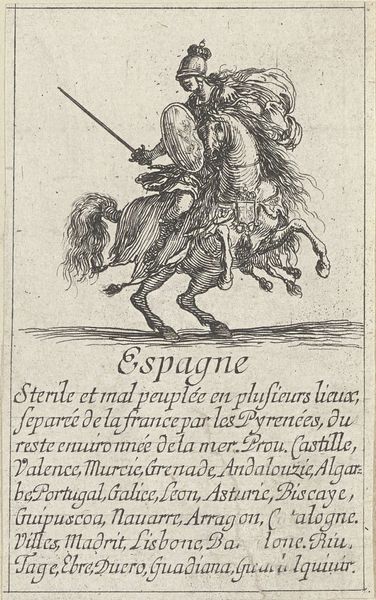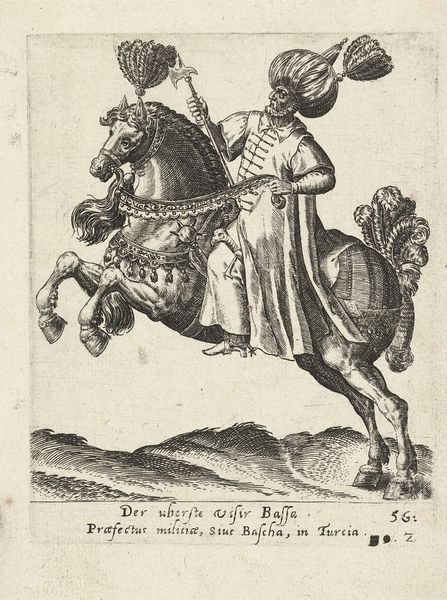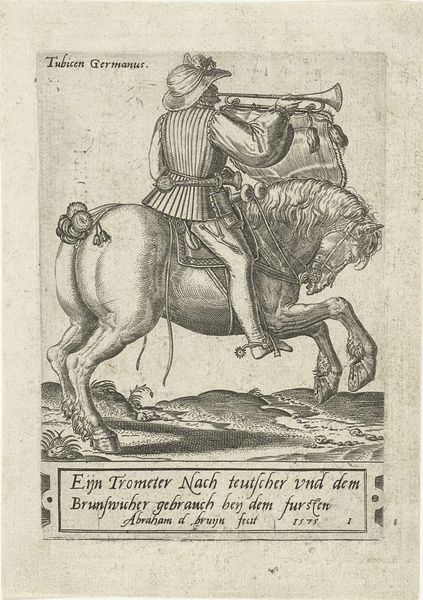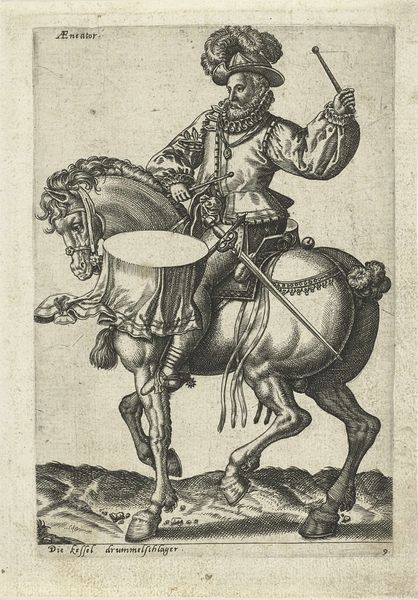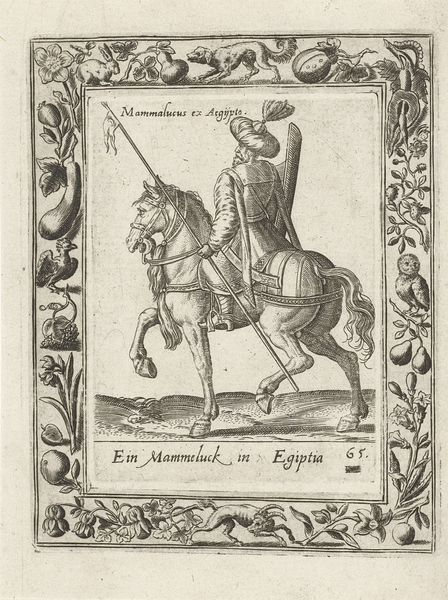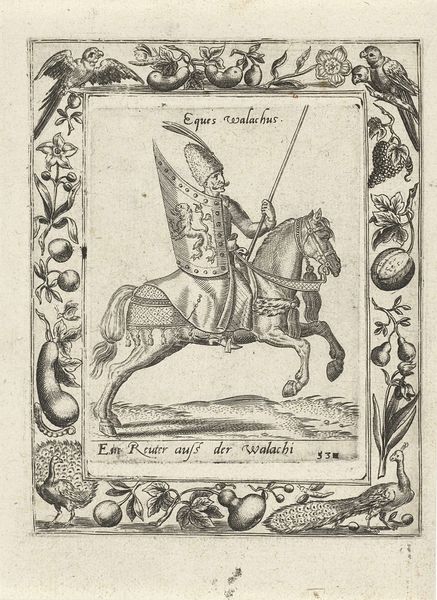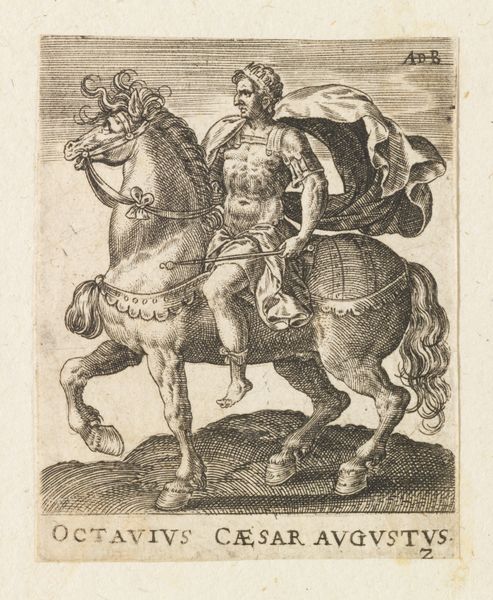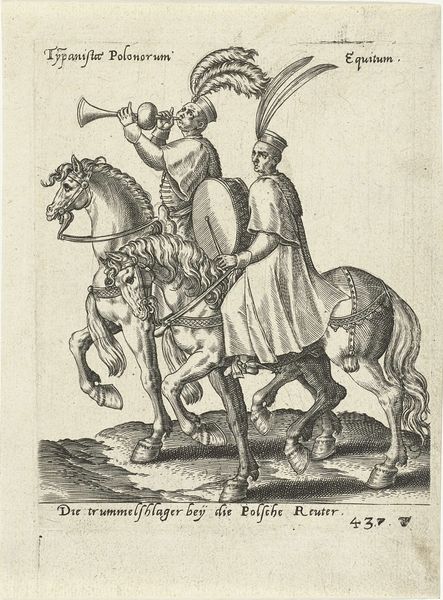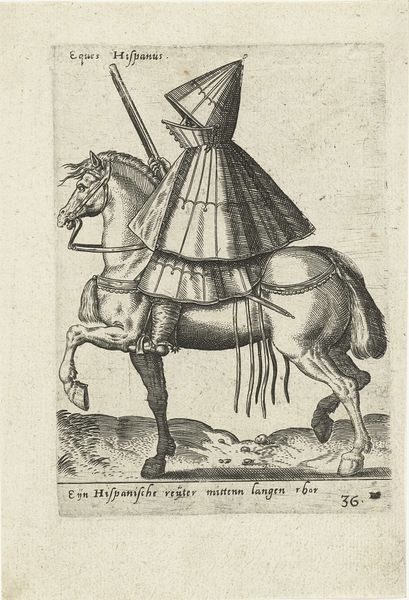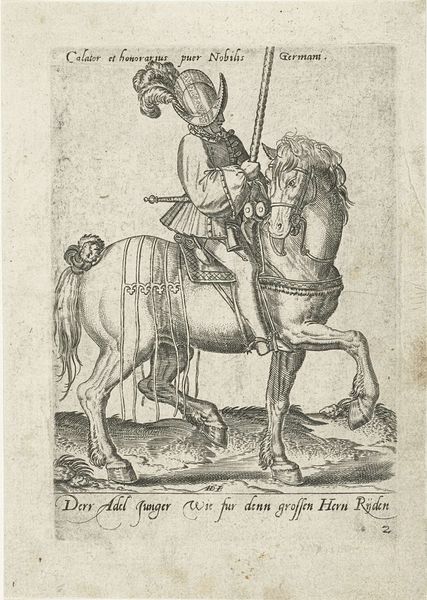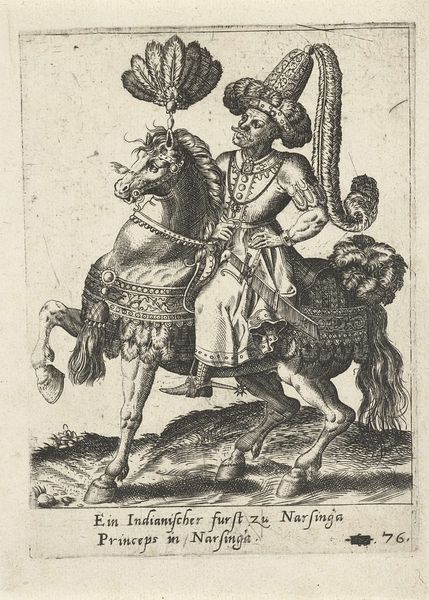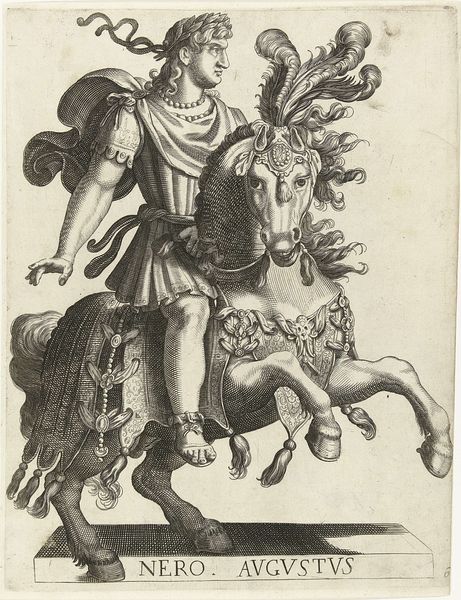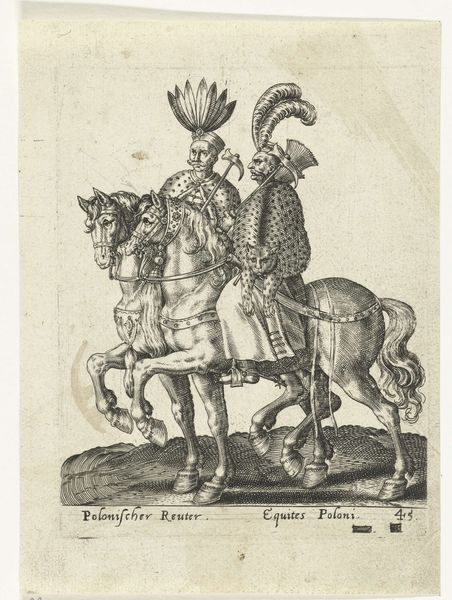
print, engraving
#
baroque
# print
#
old engraving style
#
figuration
#
form
#
pen-ink sketch
#
line
#
history-painting
#
engraving
Dimensions: height 89 mm, width 55 mm
Copyright: Rijks Museum: Open Domain
Curator: This is "Vrouw uit Perzië te paard" – or "Woman from Persia on Horseback" – by Stefano della Bella, dating from somewhere between 1620 and 1664. It's an engraving currently held at the Rijksmuseum. Editor: The intricate lines immediately catch my eye. It has such a strong sense of movement. What's fascinating to me is how the materiality of printmaking allows for mass distribution of imagery; how do you see the materials impacting our reading of this image? Curator: That’s a keen observation. Consider the physical labor involved: the precise carving into the metal plate, the repeated act of printing. This image becomes a commodity, reflecting both della Bella’s skill and the economic structures supporting his practice. How does the engraving medium change our perception of Persia, removed from its original cultural context? Editor: I hadn't thought of it like that before. It is an interpretation crafted through European eyes, and the very act of reproducing it changes its meaning. Is this image meant to celebrate or exoticize? Curator: Perhaps both. These prints served various functions – documentation, decoration, and dissemination of information, however skewed. Look at the level of detail he achieves despite it being a relatively small print. The act of close looking itself, facilitated by the print, encourages a certain consumption of the image and the "exotic" East it represents. Does understanding its function change how you perceive the artistry? Editor: Absolutely. Considering its mass production, it loses some aura of uniqueness but gains power through distribution. I understand now that we can interpret both subject and purpose in light of materiality and production. Curator: Precisely. By acknowledging the material conditions, we gain a deeper appreciation for not just the artwork but also the social and economic forces that shaped it.
Comments
No comments
Be the first to comment and join the conversation on the ultimate creative platform.
